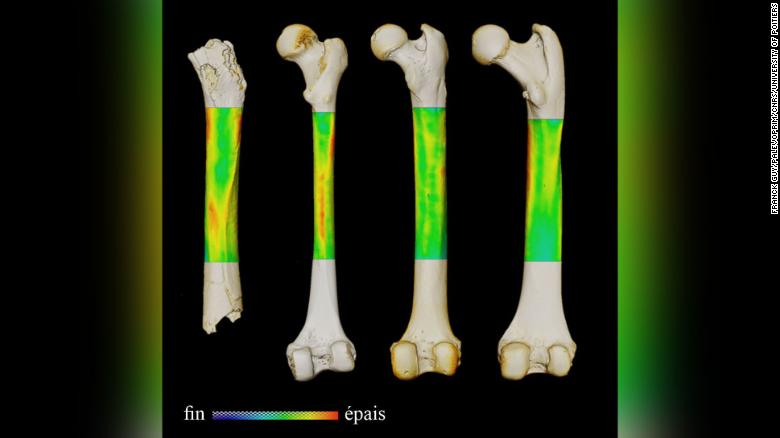Human fossils nearly 4 million years old discovered in South Africa 1:01
(CNN) --
When you walk out the door to start your day, you may not know that you're participating in something that defines us as humans, and that our ancestors began doing 7 million years ago, according to new research.
Researchers looked at a femur and two ulna bones from the arm of
Sahelanthropus tchadensis
, one of the earliest known human ancestors, and found indications that they walked on two feet, also known as bipedalism, according to a new study published Wednesday in the academic journal Nature.
"Our oldest known representatives practiced bipedalism (on the ground and in trees)," said study author Franck Guy, a researcher at the University of Poitiers, France.
The remains of ancient beings show that bipedalism arose shortly after chimpanzee and human ancestors diverged in their evolutionary paths, he added.
But there is even more to discover from these fossils.
Its characteristics show that
Sahelanthropus tchadensis
also retained the ability to climb trees deftly, according to the study.
Experts believe that these early human ancestors were adept at both walking and climbing trees.
These ancestors were hominins, or species more closely related to humans than chimpanzees, and mark an early stage in our evolutionary divergence, said Daniel Lieberman, a Harvard University professor of human evolutionary biology and paleoanthropologist.
Lieberman was not involved in the study.
Bipedalism in these ancestors isn't exactly a surprise.
The arm and leg bones analyzed in this study were found in Chad in 2001 alongside a nearly complete skull, according to the study.
However, it's not clear if they came from the same individual, said study author Guillaume Daver, an assistant professor of paleontology at the University of Poitiers.
advertising
The skull showed a downward-pointing point at the junction of the head and spinal cord, a trait that would make walking on all fours much more difficult, Lieberman said.
New analysis of limbs from that find provides further evidence that hominins moved on two legs when they roamed the Earth about 7 million years ago, he added.
"It's a look at what put the human lineage on a different evolutionary path than our ape cousins," Lieberman said.
Although recent findings support what early studies already suggested, fossils from this era are rare, so each discovery is important evidence, he added.
And the new study "makes it quite unlikely that the common ancestor we share with chimpanzees looked like a chimpanzee," Guy said.
This image shows the thickness variation map of the femurs of Sahelanthropus, an extant human, a chimpanzee, and a gorilla (from left to right in posterior view).
Bipedalism unleashed the process
Bipedalism was very important to our evolution, but it didn't make much sense to our ancestors, Lieberman said.
Walking on two legs makes an animal slower, more unstable and more at risk of back pain, none of which is helpful for survival, he added.
"There has to be some really big upside," Lieberman said.
Scientists have a hypothesis about what it could have been.
Our common ancestor with apes was very much like chimpanzees, and we know that they need to use a lot of energy to walk, twice as much as humans if adjusted for body size, Lieberman said.
Discovery in a cave in Laos could reveal more about the greatest mystery of human evolution
When the evolutionary trajectories of humans and chimpanzees diverged, Earth's climate was changing and Africa's rain forests were melting, so our ancestors had to travel farther to get food, he said.
The hypothesis is that walking on two legs gave them more energy to move.
"What really made us go down this different evolutionary path is that we were bipedal, or we walked on two legs," Lieberman said.
"It helps us really understand the origins of humanity."
There are many things that define us as humans, such as language, tools and fire, he said.
And in the 1870s, Charles Darwin, without any of the evidence we have now, reckoned that walking on two legs was the spark that started it all, Lieberman said.
And now we can see that bipedalism was a big ape differentiator and helped free up our hands to make tools, Lieberman said.
"We proved that Darwin was right," he said.
"That's great".
hominids















